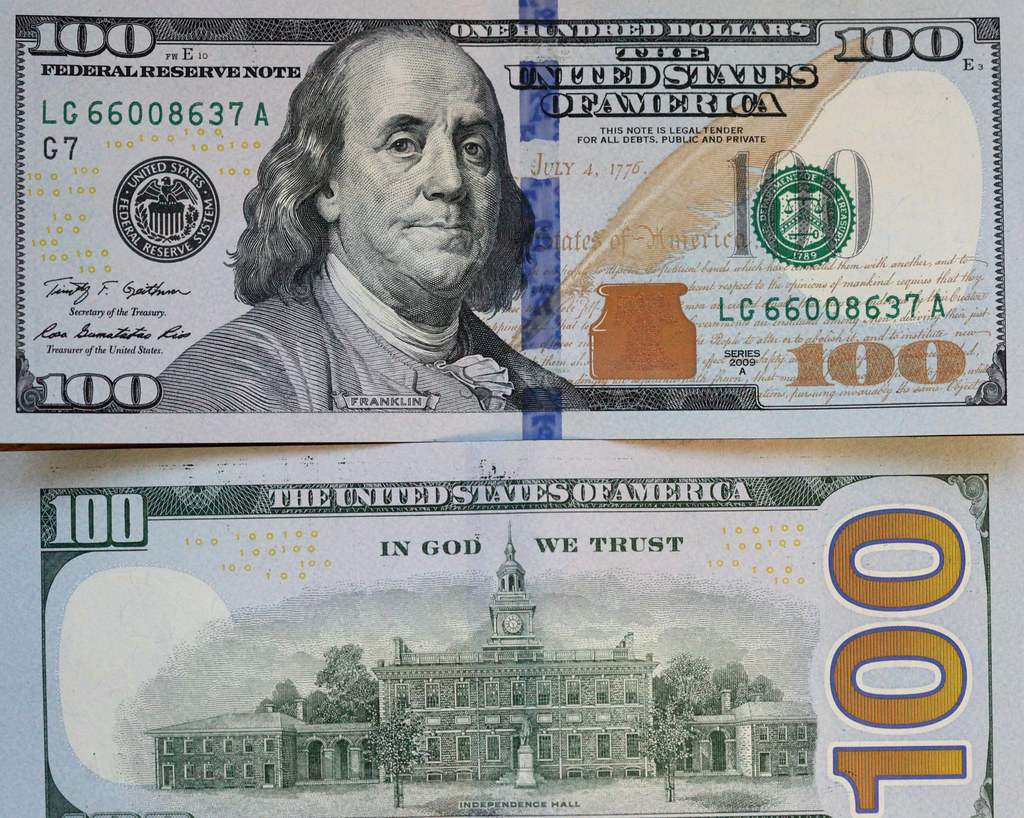

"We are working really hard to try to get a solution to the problem." Anderson said Treasury has seen encouraging results from several recent tests of the printing process. "A very high proportion of the notes will be fit for circulation," said Darlene Anderson of the Treasury Department. Officials say they remain optimistic that the majority of the 1.1 billion bills will eventually be cleared for circulation. On top of that, it is not yet clear how much more it will cost to sort the existing horde of hundred dollar bills.
That means the government spent about $120 million to produce bills it can’t use. American taxpayers have already spent an enormous amount of money to print the bills.Īccording to a person familiar with the matter, the bills are the most costly ever produced, with a per-note cost of about 12 cents-twice the cost of a conventional bill. The defective bills-which could number into the tens of millions, potentially representing billions of dollars in face value-will have to be shredded. Using a mechanized system, they think they could sort the massive pile of bills, each of which features the familiar image of Benjamin Franklin on the face, in about one year. Sorting such a huge quantity of bills by hand, the officials estimate, could take between 20 and 30 years. "The frustration level is off the charts."īecause officials don’t know how many of the 1.1 billion bills include the flaw, they have to hold them in the massive vaults until they are able to develop a mechanized system that can sort out the usable bills from the defects. "There is something drastically wrong here," a person familiar with the situation said. Officials don’t know exactly what caused the problem. For now, the unusable bills are stored in the vaults in "cash packs" of four bundles of 4,000 each, with each pack containing 16,000 bills. The total face value of the unusable bills, $110 billion, represents more than ten percent of the entire supply of US currency on the planet, which a government source said is $930 billion in banknotes.
#NEW 100 DOLLAR BILL SCAN FOR ARTWORK SERIES#
The cost of the examination process for the new notes is not disclosed, but the Federal Reserve estimates that the NexGen $100 note costs 12.6 cents each to produce, making the printing cost of the entire series under $4 million.Ī request for comment to the Bureau of Engraving and Printing was directed to the Federal Reserve Public Affairs office, which has not responded.At the time, officials announced the new bills would incorporate sophisticated high-tech security features, including a 3-D security strip and a color-shifting image of a bell designed to foil counterfeiters.īut the production process is so complex, it has instead foiled the government printers tasked with producing billions of the new notes.Īn official familiar with the situation told CNBC that 1.1 billion of the new bills have been printed, but they are unusable because of a creasing problem in which paper folds over during production, revealing a blank unlinked portion of the bill face.Ī second person familiar with the situation said that at the height of the problem, as many as 30 percent of the bills rolling off the printing press included the flaw, leading to the production shut down. A star note from Atlanta is also reported. Thus far, notes are reported from Atlanta (F), Chicago (G) and Richmond (E). The second letter signifies the Federal Reserve district.
#NEW 100 DOLLAR BILL SCAN FOR ARTWORK SERIAL#
Series 2009 notes all have the letter J as the first letter in the serial number.

In the interim, Series 2009A notes were produced under a corrected production process and entered circulation on Oct.

In total, $110 billion worth of the notes were printed, and with estimates that as much as 30 percent of the printing could be defective, the entire issue was quarantined for further inspection. Later, a problem that was called “mashing” was also reported, where too much ink was applied to the paper so the lines of the artwork were not as crisp as they should be.


 0 kommentar(er)
0 kommentar(er)
